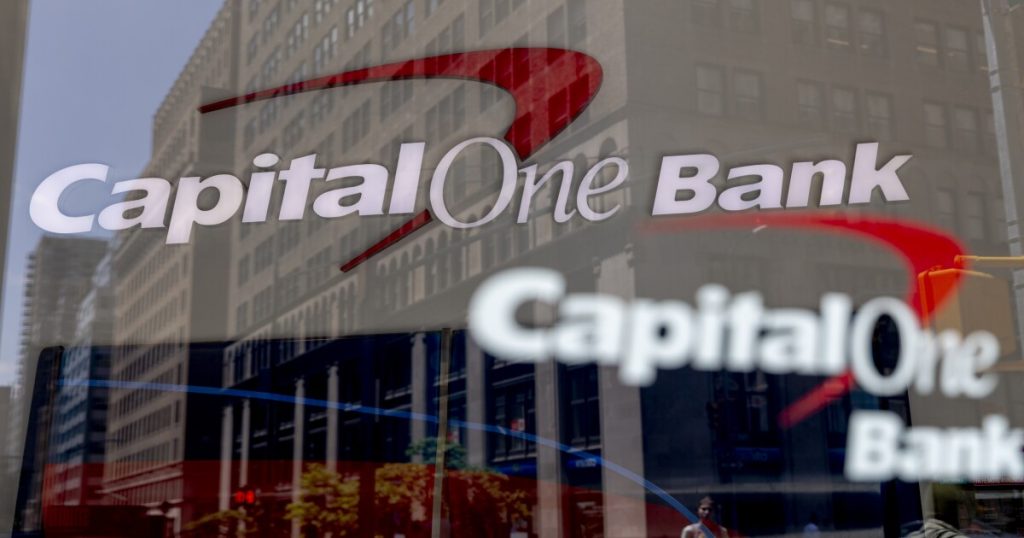This is a breaking-news story. It will be updated.
Capital One Financial reported a net loss of $4.3 billion in the second quarter as expenses related to its acquisition of Discover Financial Services put a massive hole in the bank’s earnings.
The McLean, Virginia-based bank has acknowledged that the integration of Discover will be a marathon, not a sprint. But in the last three months, Capital One spent $9.4 billion on items related to the deal, which officially closed in May.
Still, Capital One Chairman and CEO Richard Fairbank has continually reiterated that owning Discover’s payment network will be well worth the costs that accrue.
“We’re fully mobilized and hard at work on integration which is going well,” Fairbank said Tuesday in a prepared statement. “We’re as excited as ever by the expanding set of opportunities to grow and create value as a combined company.”
Capital One said in its earnings presentation that it closed the Discover deal for $51.8 billion, when accounting for items like the bank’s balance sheet, initial allowances and goodwill and intangibles.
The fact that the bank recorded a bottom-line loss wasn’t a surprise, but the loss was steeper than anticipated. Capital One reported a diluted loss per share of $8.58, compared with analysts’ consensus estimate of a $7.02 loss.
The biggest hit came from an $8.8 billion initial allowance build related to Discover’s loan portfolio.
But analysts’ estimates were “all over the place,” per a note from Truist Securities analyst Brian Foran earlier this month.
Excluding the Discover-related costs, Capital One’s diluted earnings per share in the first quarter was $5.48, compared with a consensus estimate of $3.72.
The credit card giant, which now has nearly $660 billion of assets, has estimated the deal will come with $1.5 billion in integration expenses during 2027. In the first quarter of this year, Capital One reported about $110 million in Discover-related expenses.
But Capital One has been focused on the long game.
“I think that Discover brings us a growth platform, both on the network side and with respect to their card franchise, that allows us to preserve the best of what they do, leverage a lot of Capital One’s capabilities that we bring and build something really special,” Fairbank said during the company’s first-quarter call in April.
Read more about Capital One:
Buying Discover cost more than just the price tag and the integration expenses. Federal regulators approved the deal, but they concurrently hit Discover with multiple enforcement actions and required the company to pay nearly $1.5 billion in fines and restitution.
And the road to the finish line was long and bumpy. The deal garnered opposition from politicians, consumer advocacy groups and academics, who argued that the merger would violate antitrust laws, harm consumers and endanger financial stability.
Since the Trump administration took over bank supervision, regulators’ attitude toward bank mergers and acquisitions has become more positive.
During the second quarter, Capital One set aside $41 million in legal reserves, which came on top of the $198 million in legal reserves it accrued during the first quarter.
In May, the bank agreed to pay $425 million to settle a class-action lawsuit involving the rates it paid on certain savings accounts. That same month, New York Attorney General Letitia James sued Capital One over the same issue.
The legal expenses came after the Consumer Financial Protection Bureau

